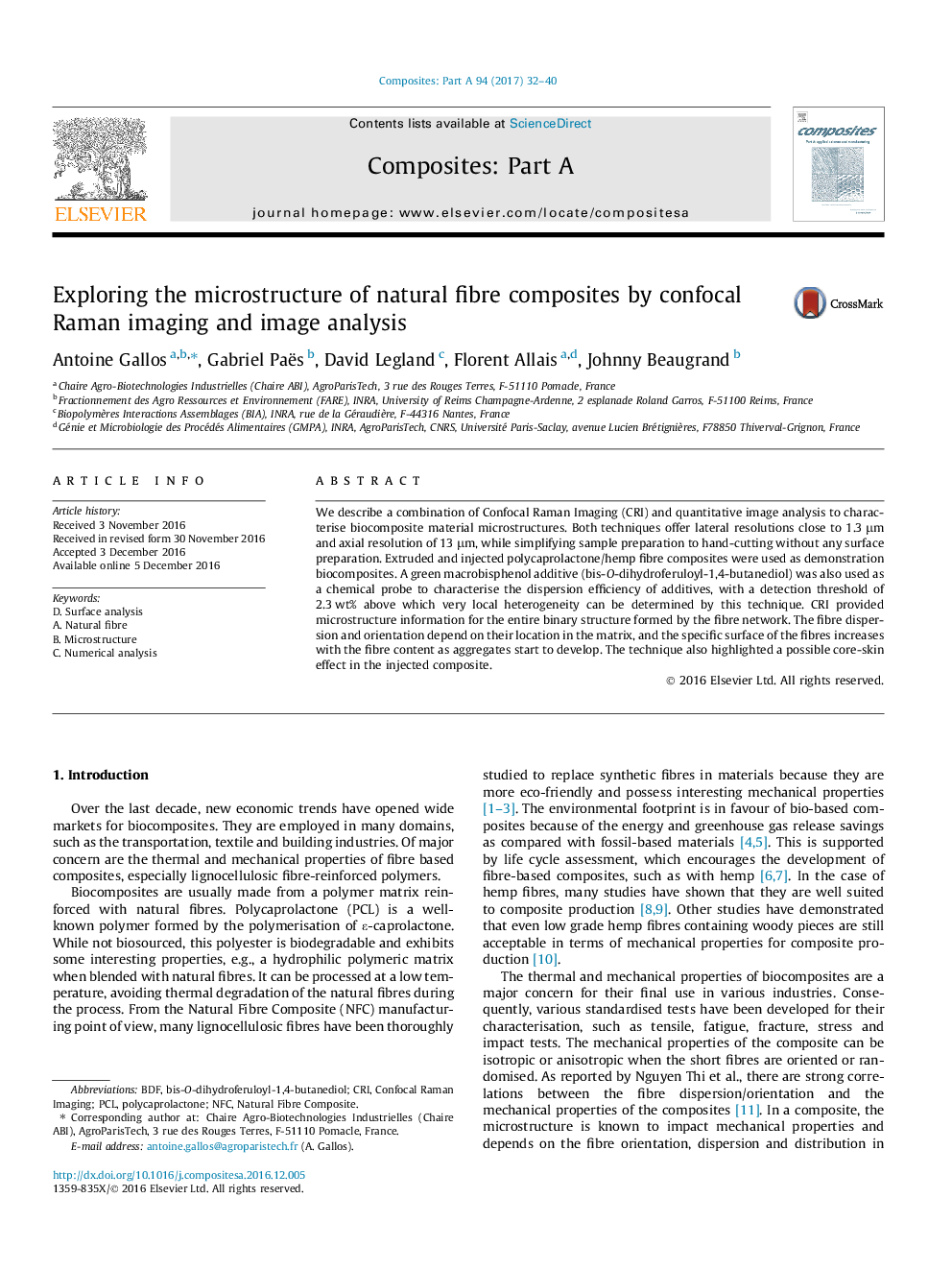| Article ID | Journal | Published Year | Pages | File Type |
|---|---|---|---|---|
| 5439605 | Composites Part A: Applied Science and Manufacturing | 2017 | 9 Pages |
Abstract
We describe a combination of Confocal Raman Imaging (CRI) and quantitative image analysis to characterise biocomposite material microstructures. Both techniques offer lateral resolutions close to 1.3 μm and axial resolution of 13 μm, while simplifying sample preparation to hand-cutting without any surface preparation. Extruded and injected polycaprolactone/hemp fibre composites were used as demonstration biocomposites. A green macrobisphenol additive (bis-O-dihydroferuloyl-1,4-butanediol) was also used as a chemical probe to characterise the dispersion efficiency of additives, with a detection threshold of 2.3 wt% above which very local heterogeneity can be determined by this technique. CRI provided microstructure information for the entire binary structure formed by the fibre network. The fibre dispersion and orientation depend on their location in the matrix, and the specific surface of the fibres increases with the fibre content as aggregates start to develop. The technique also highlighted a possible core-skin effect in the injected composite.
Keywords
Related Topics
Physical Sciences and Engineering
Materials Science
Ceramics and Composites
Authors
Antoine Gallos, Gabriel Paës, David Legland, Florent Allais, Johnny Beaugrand,
